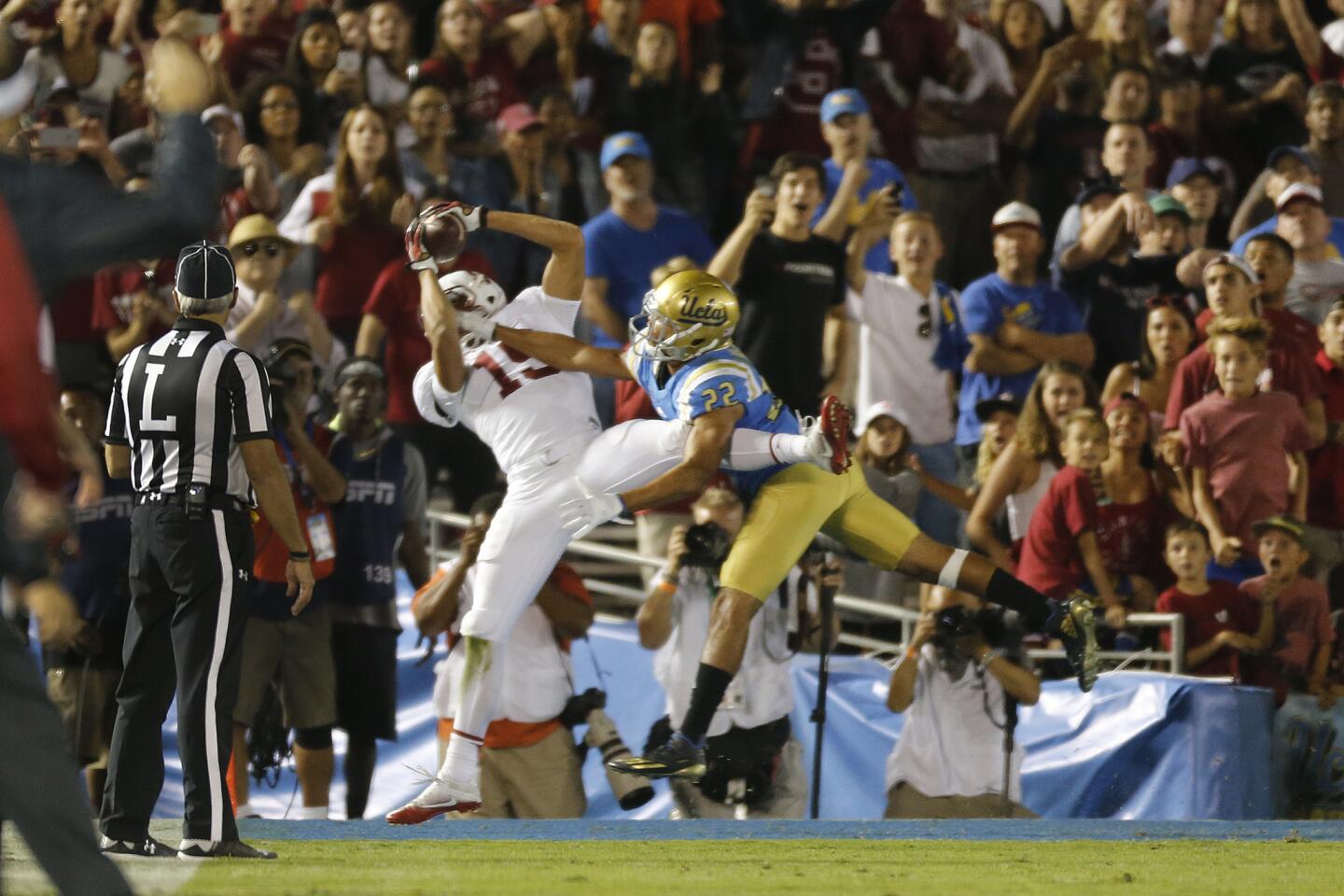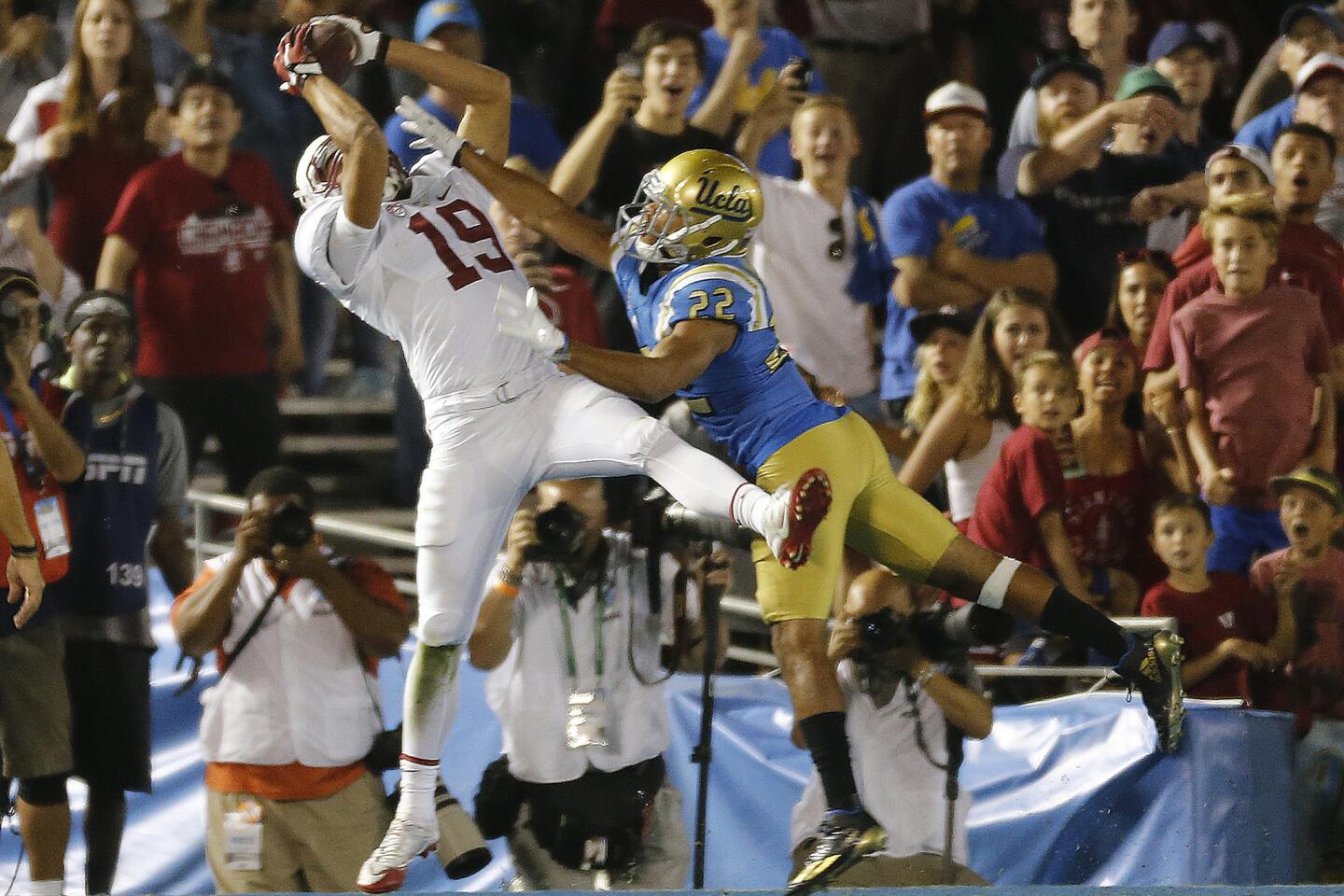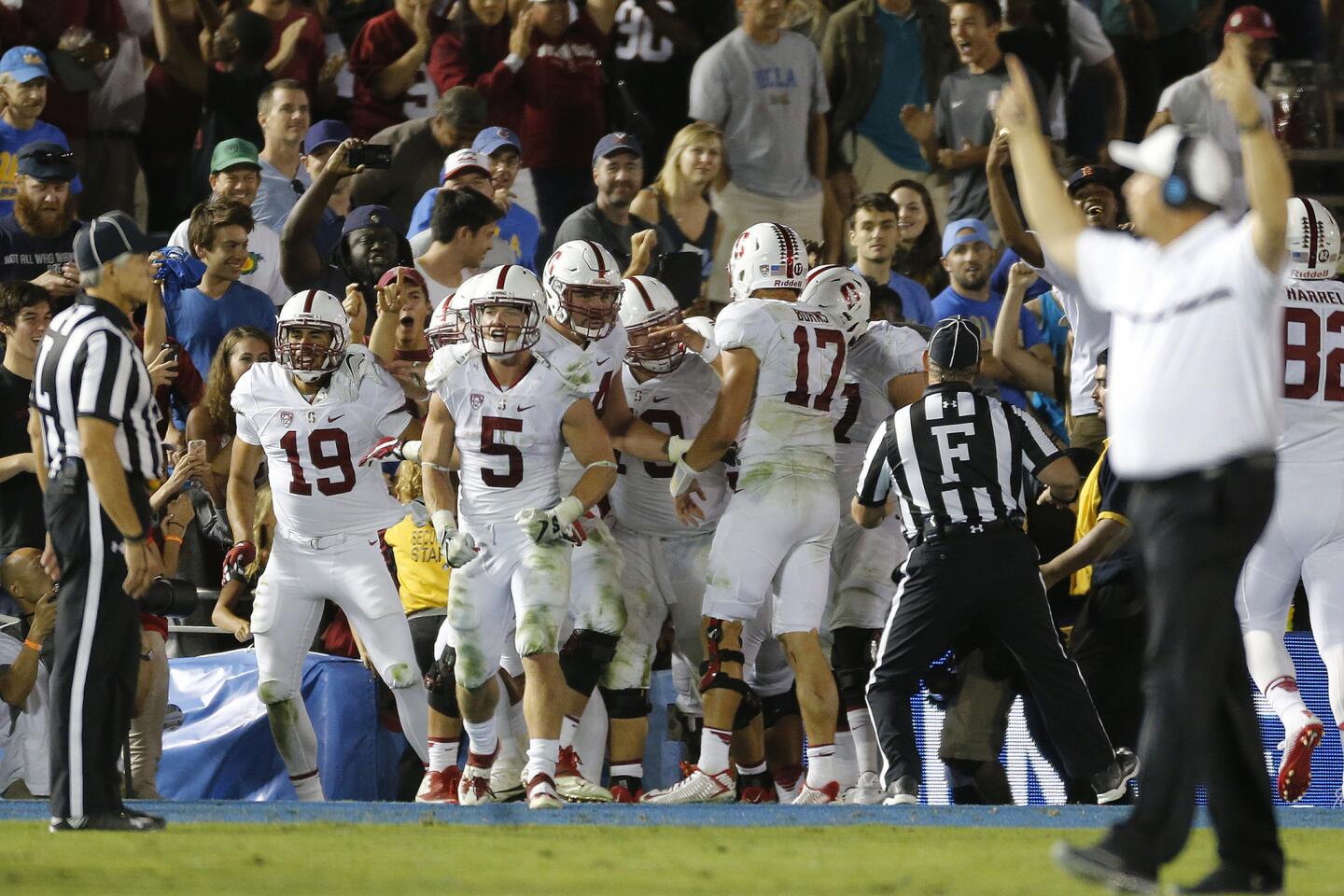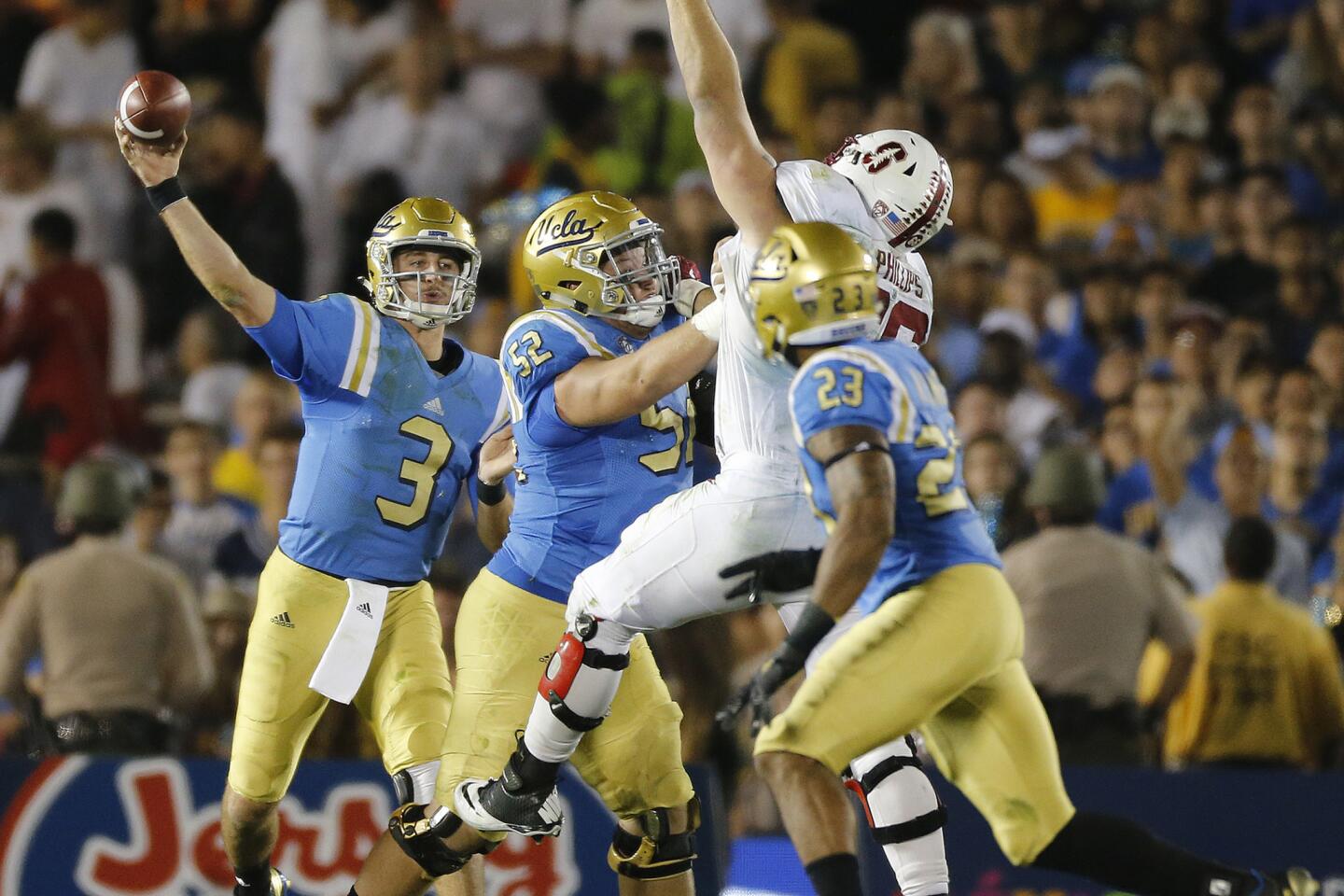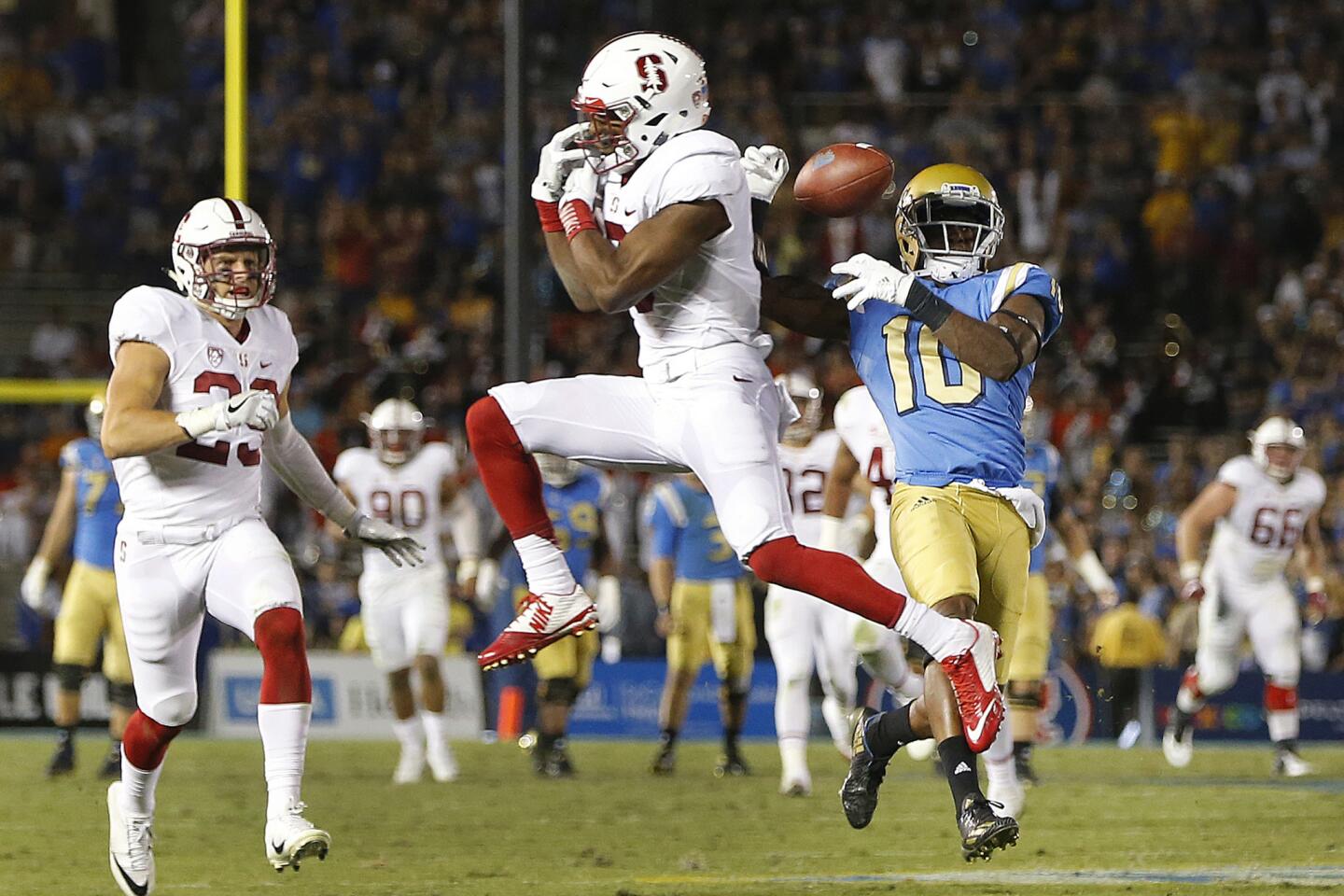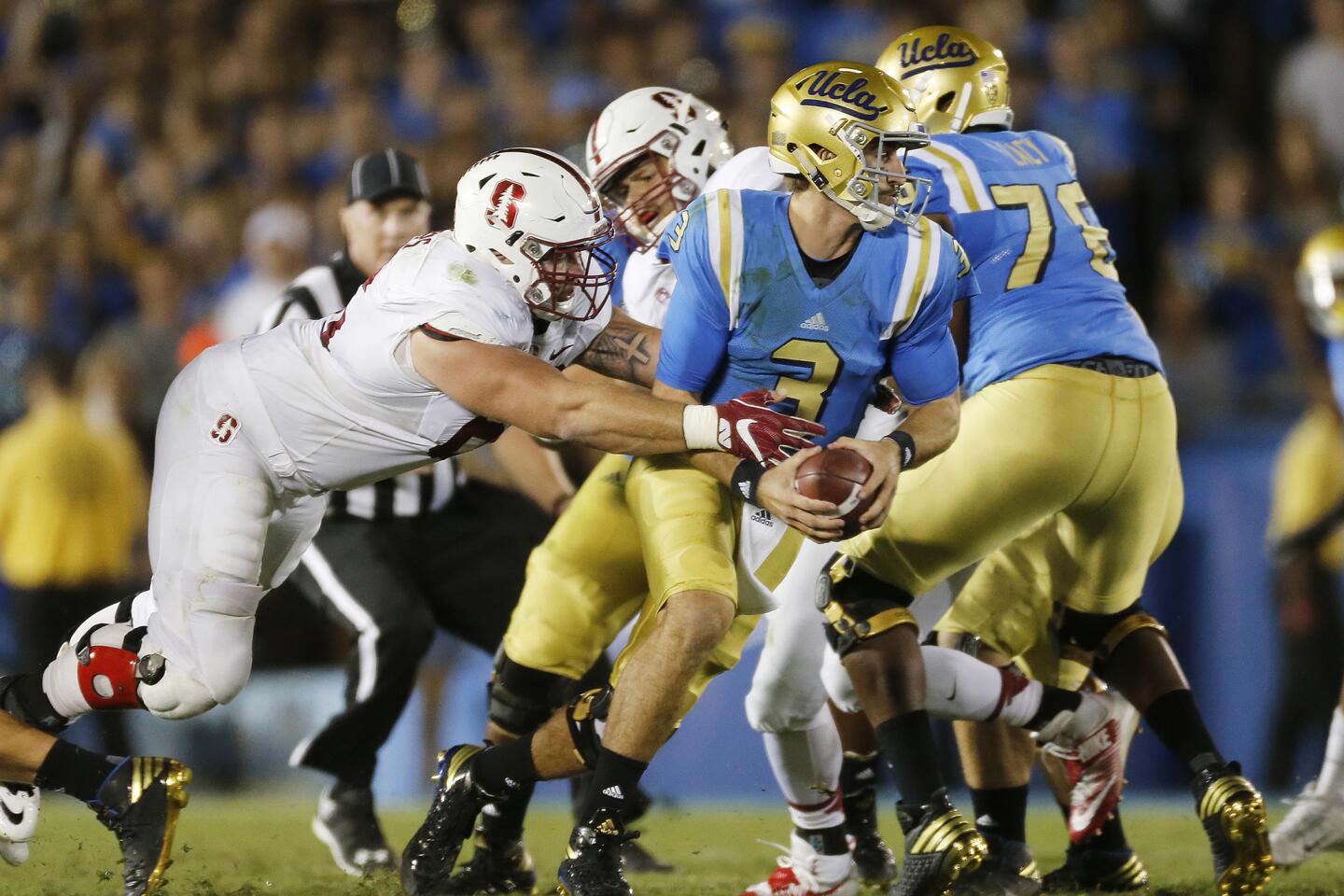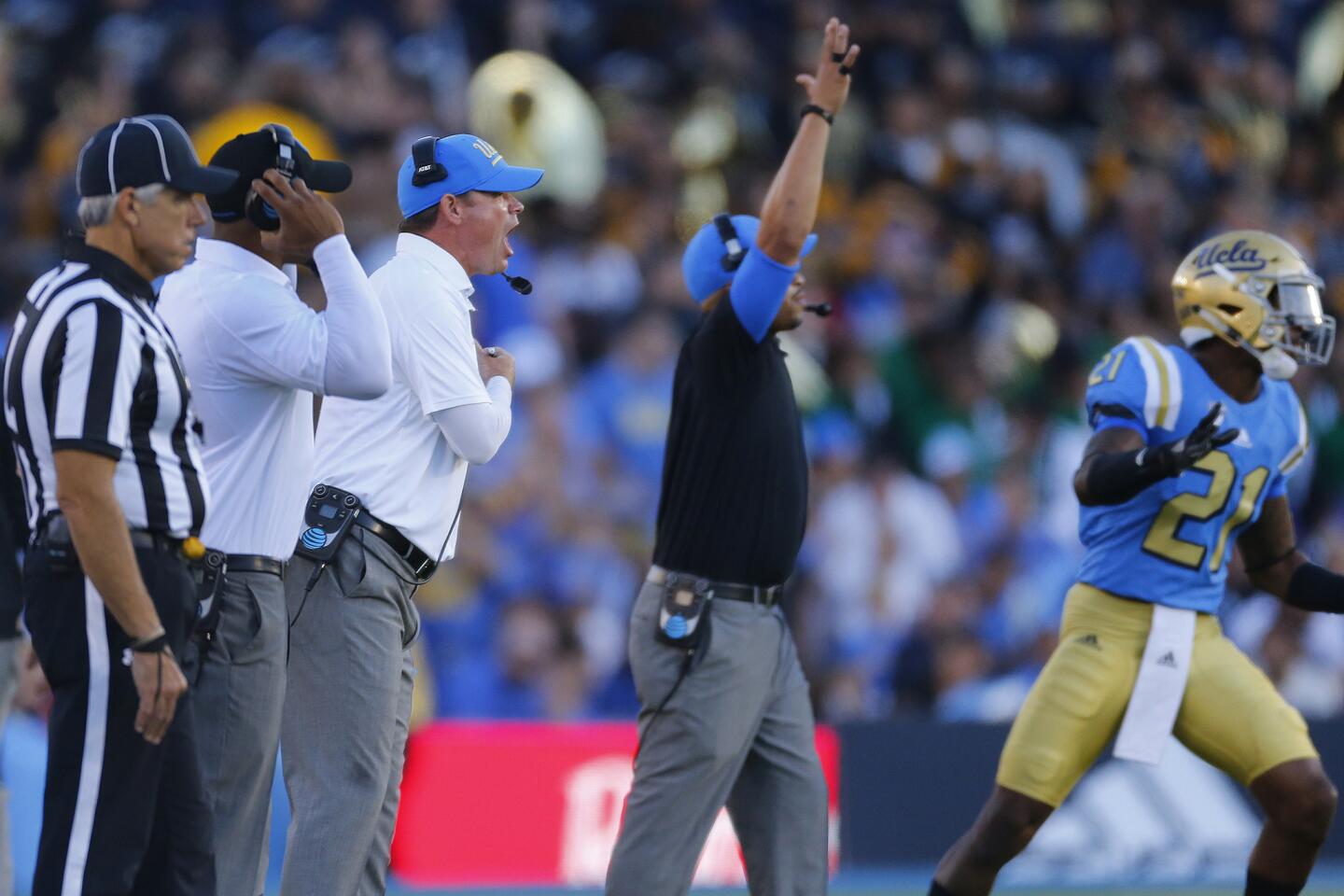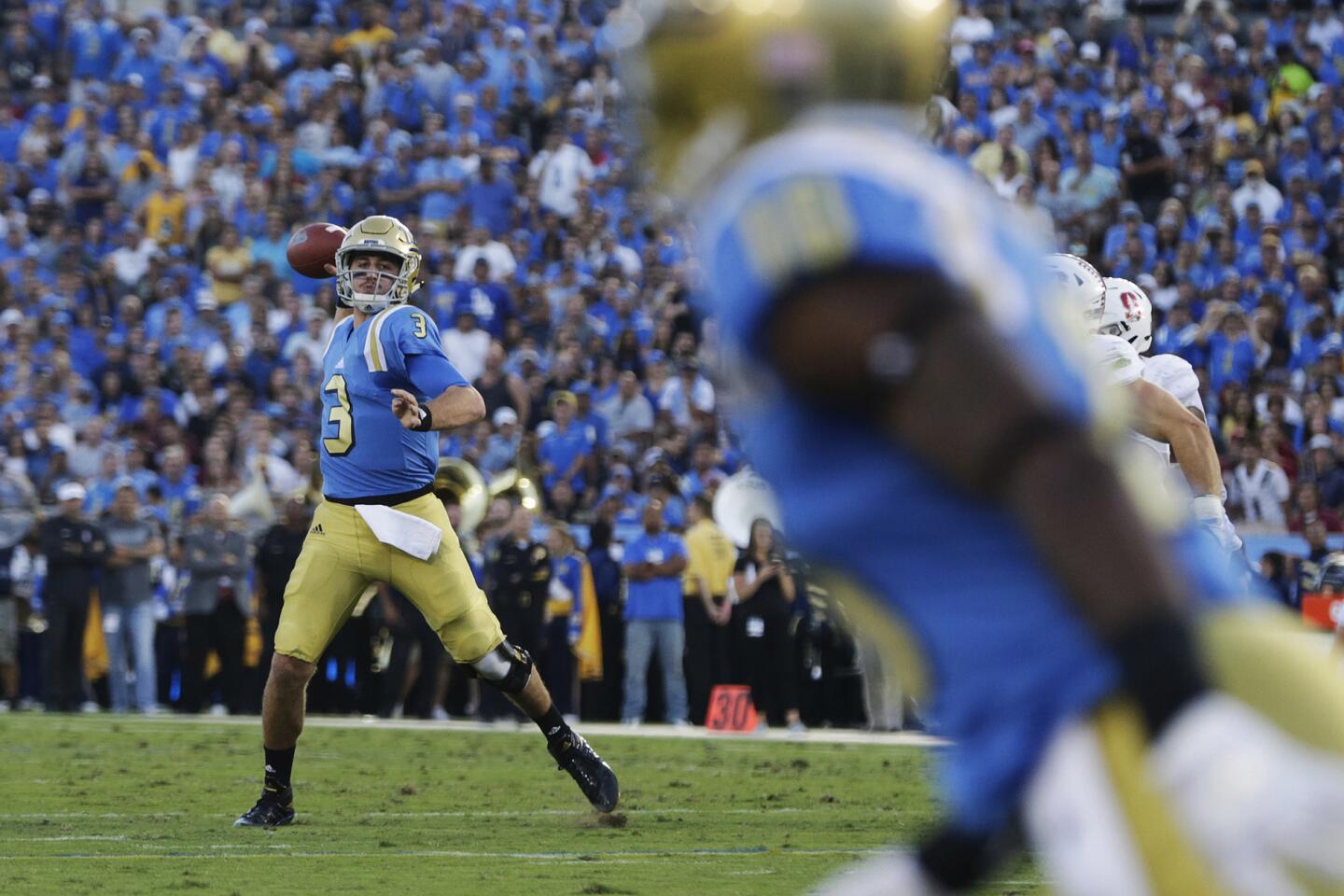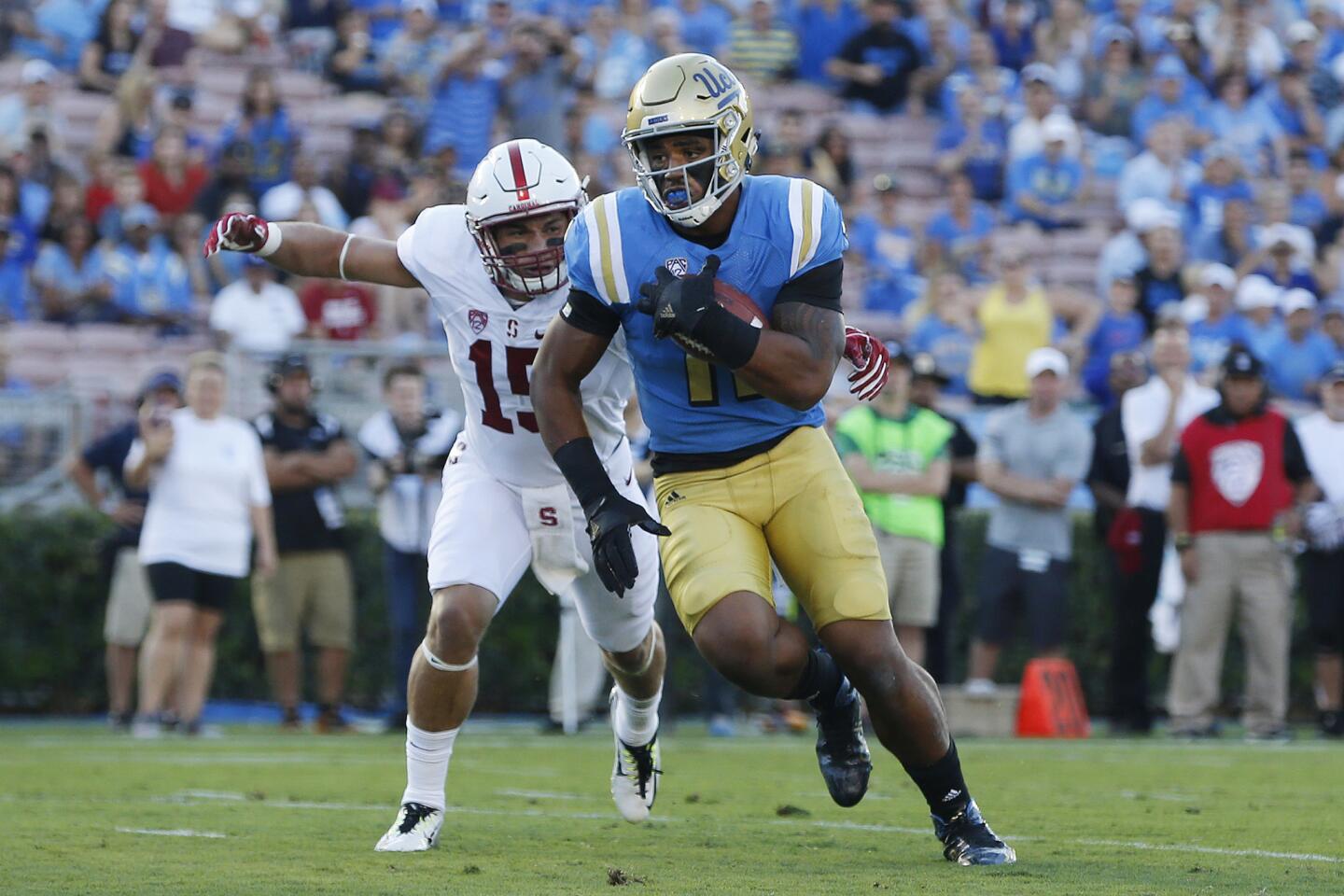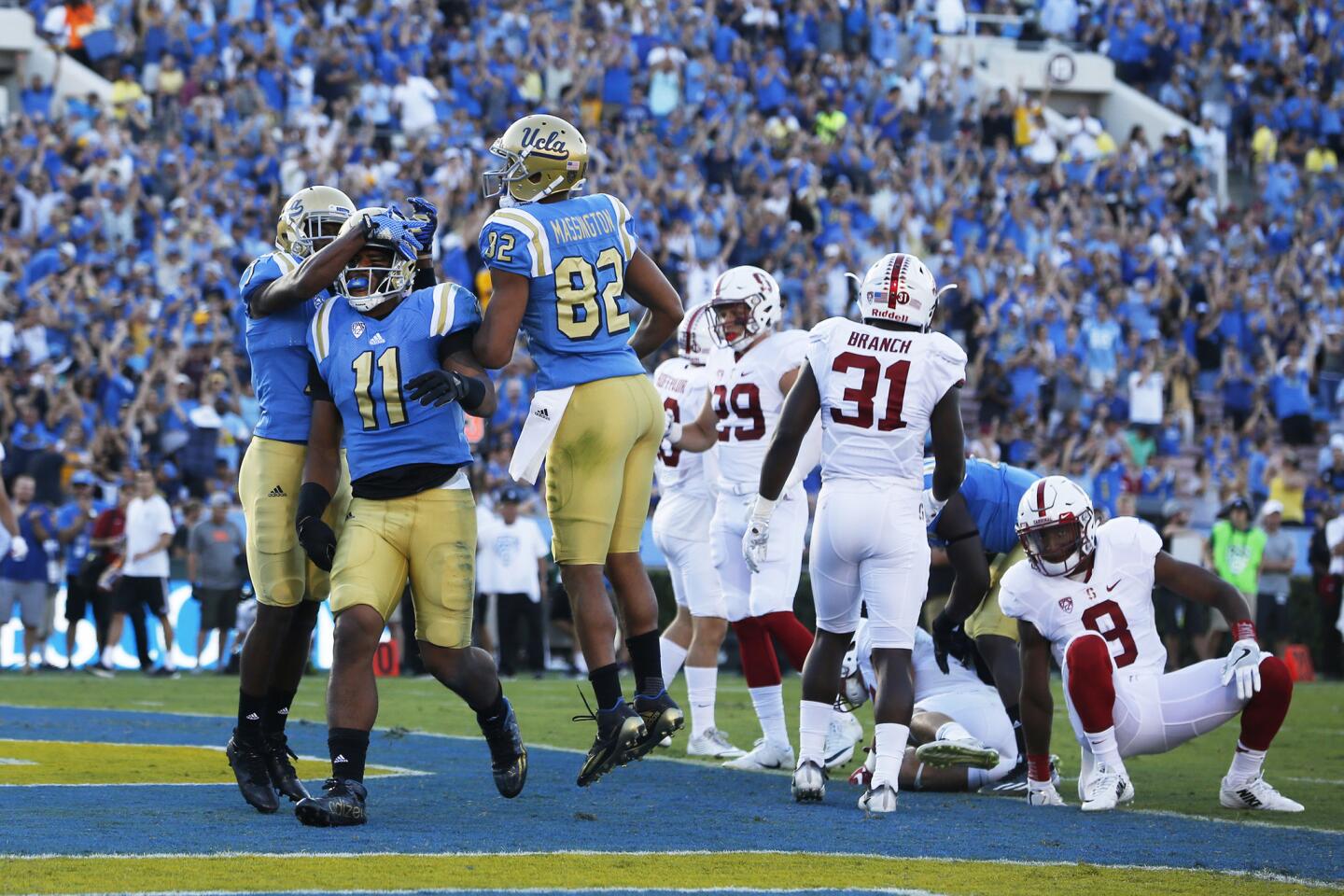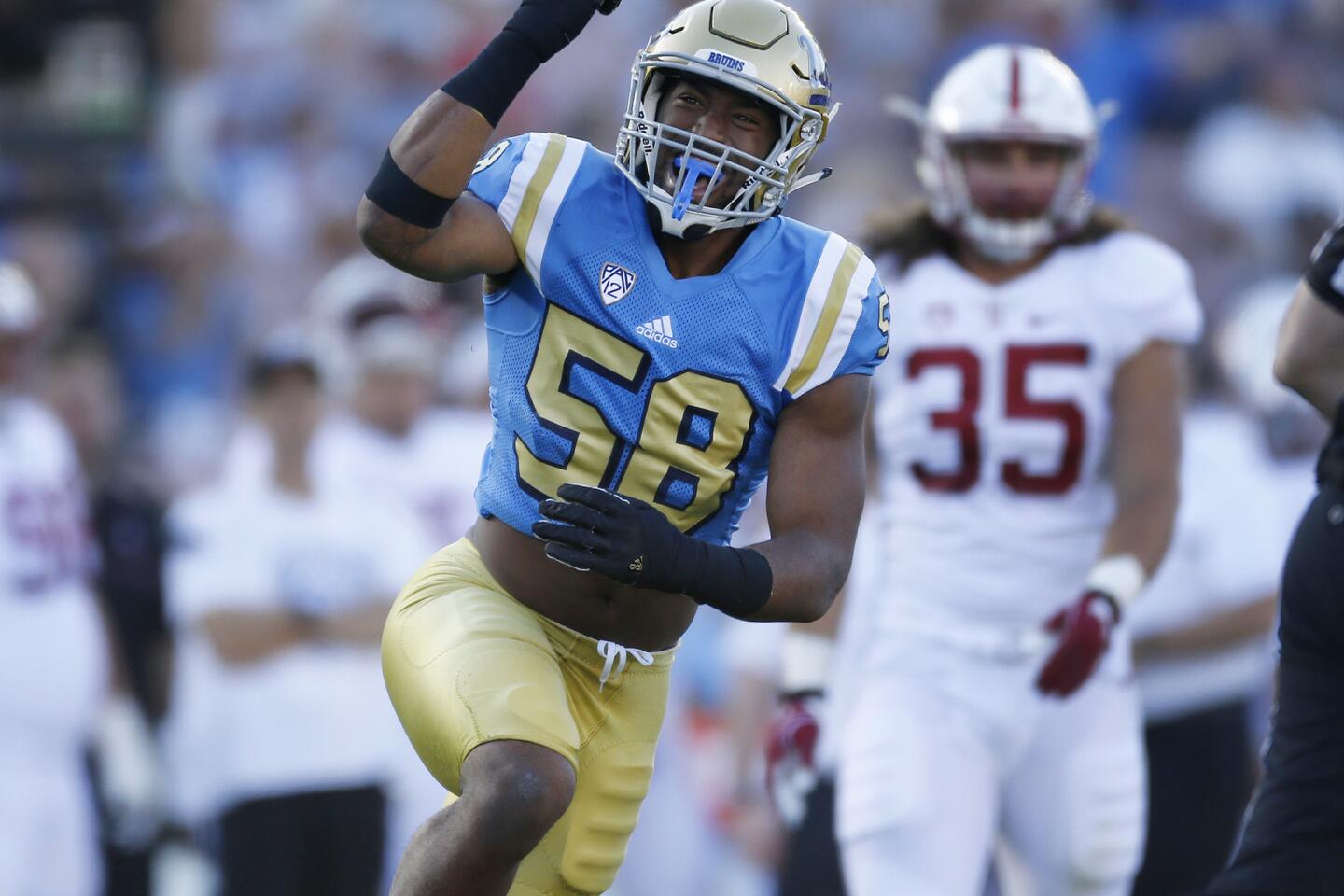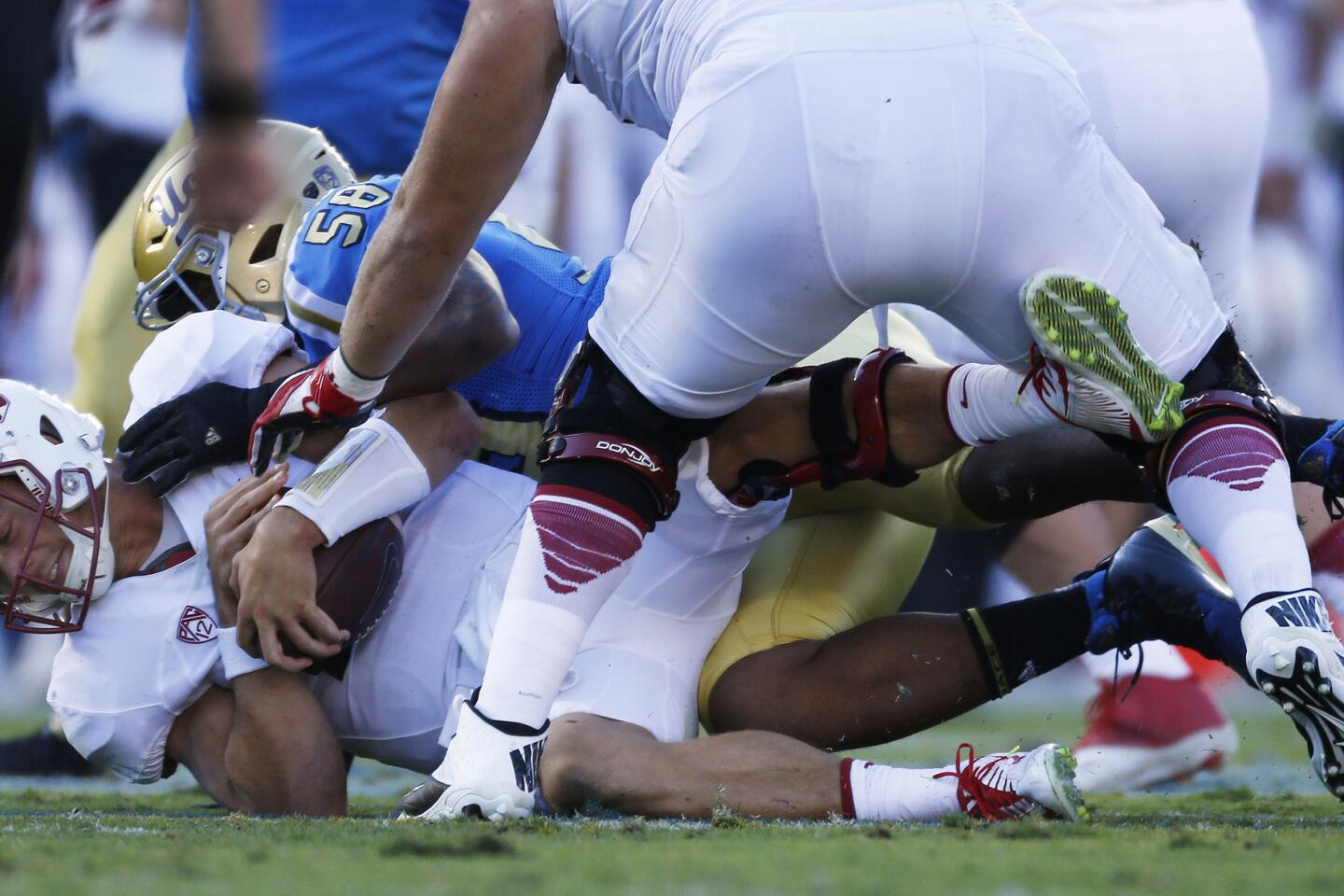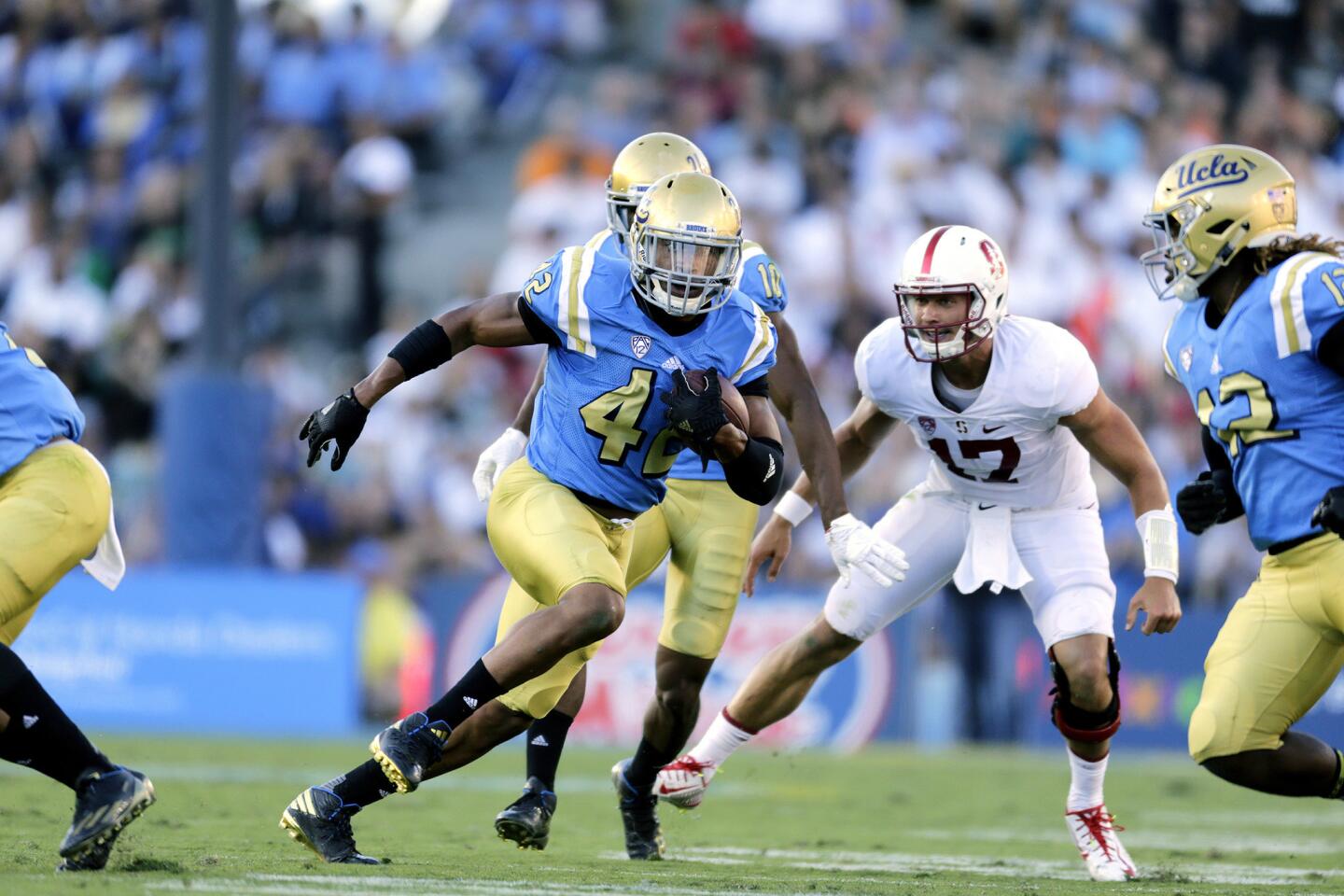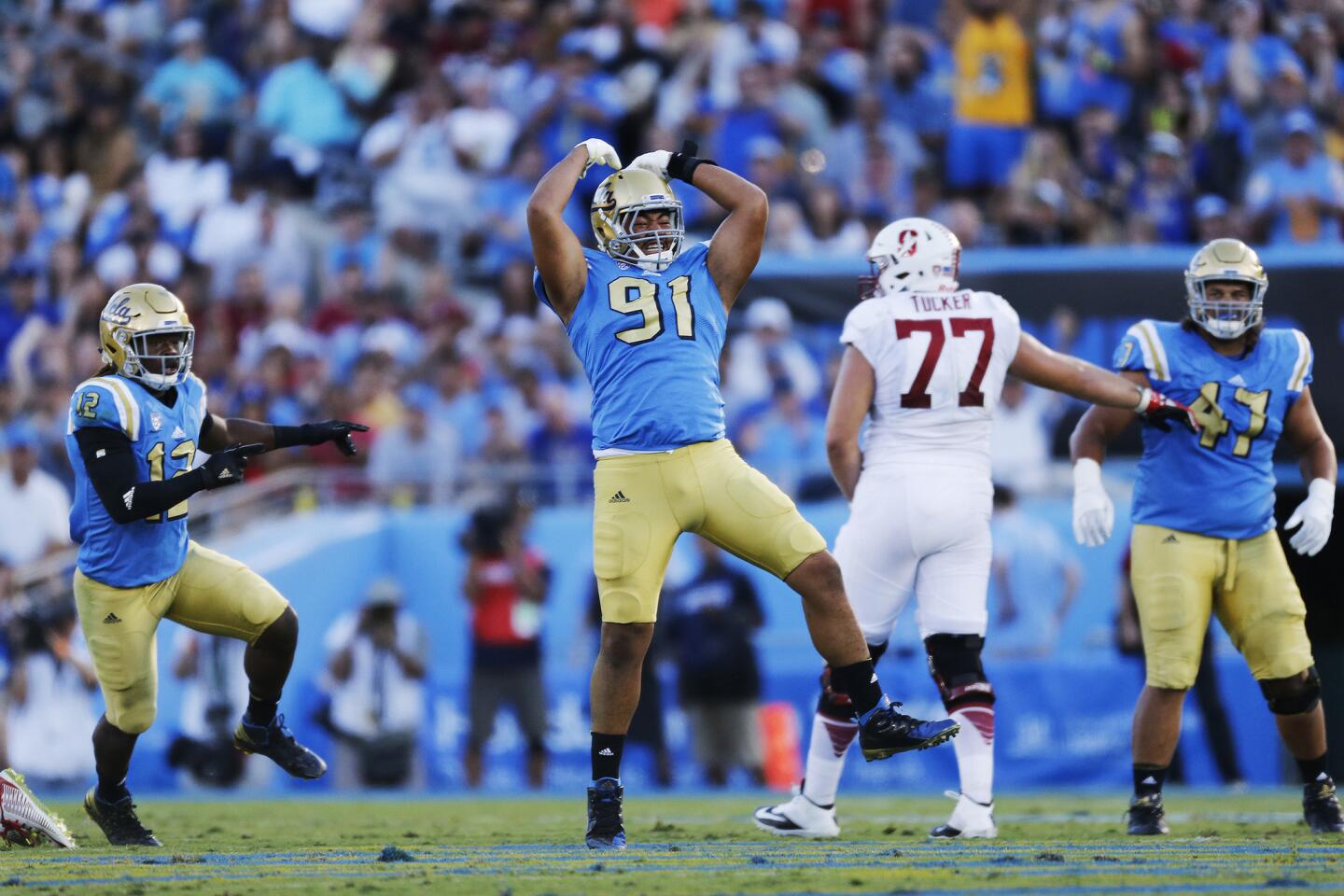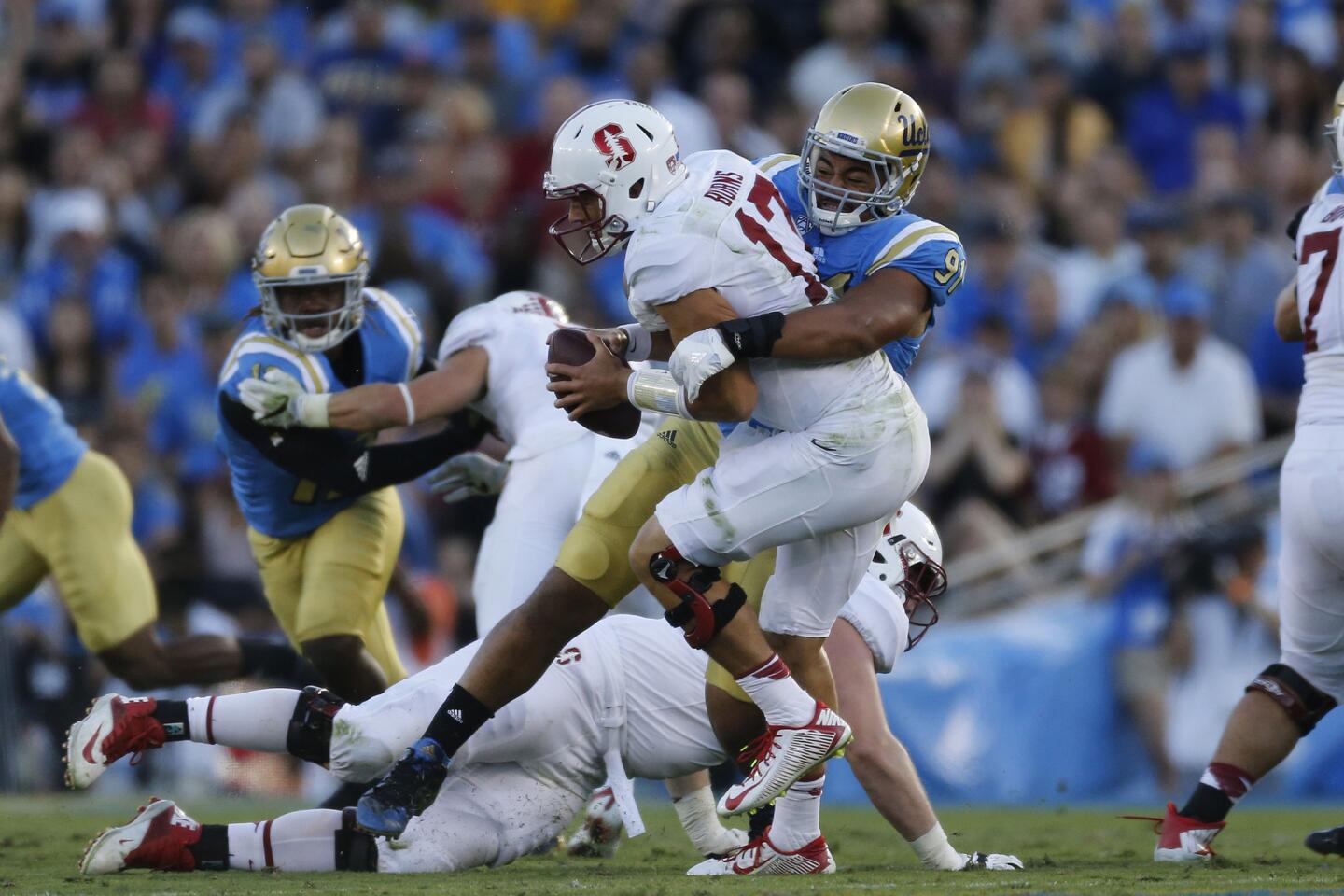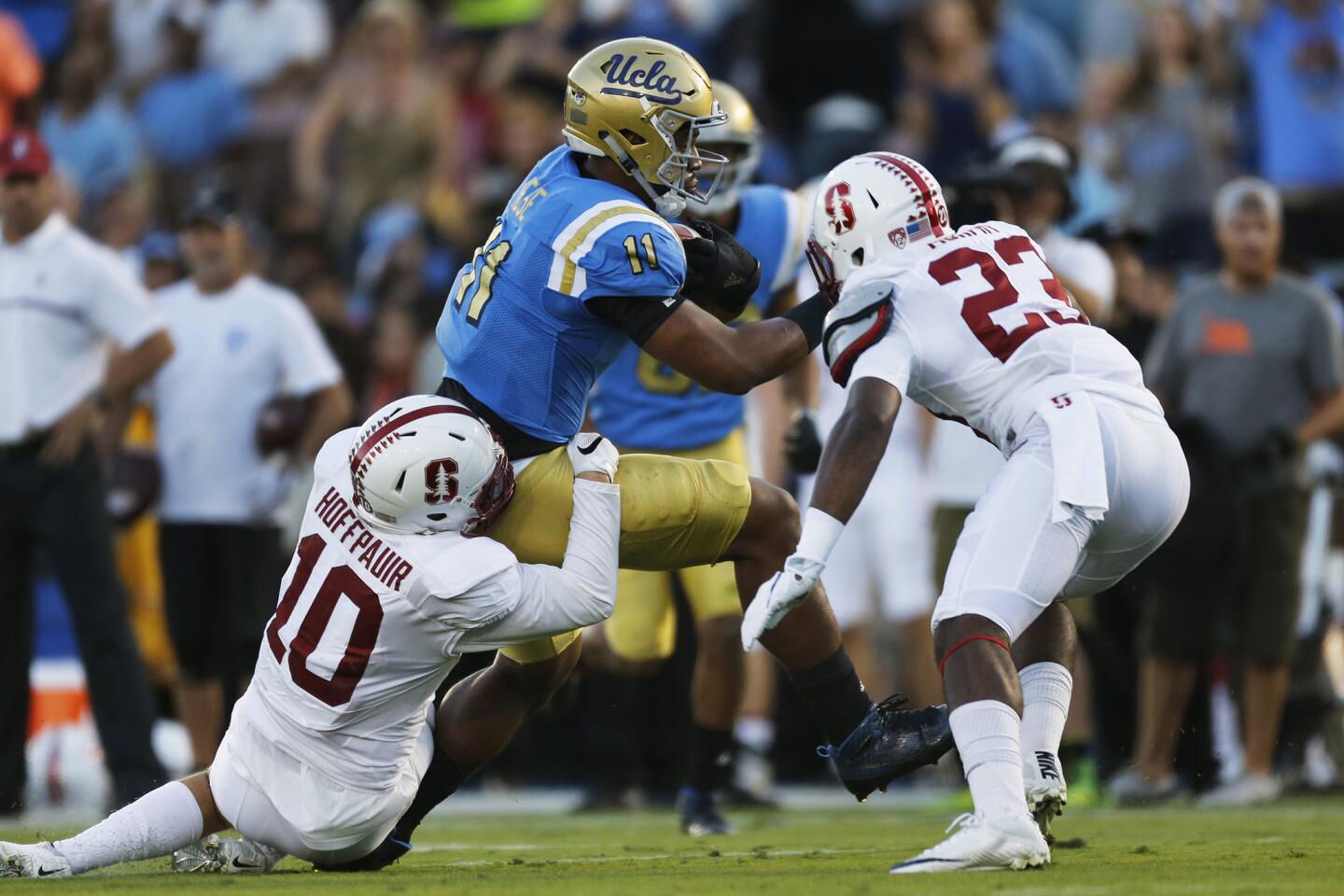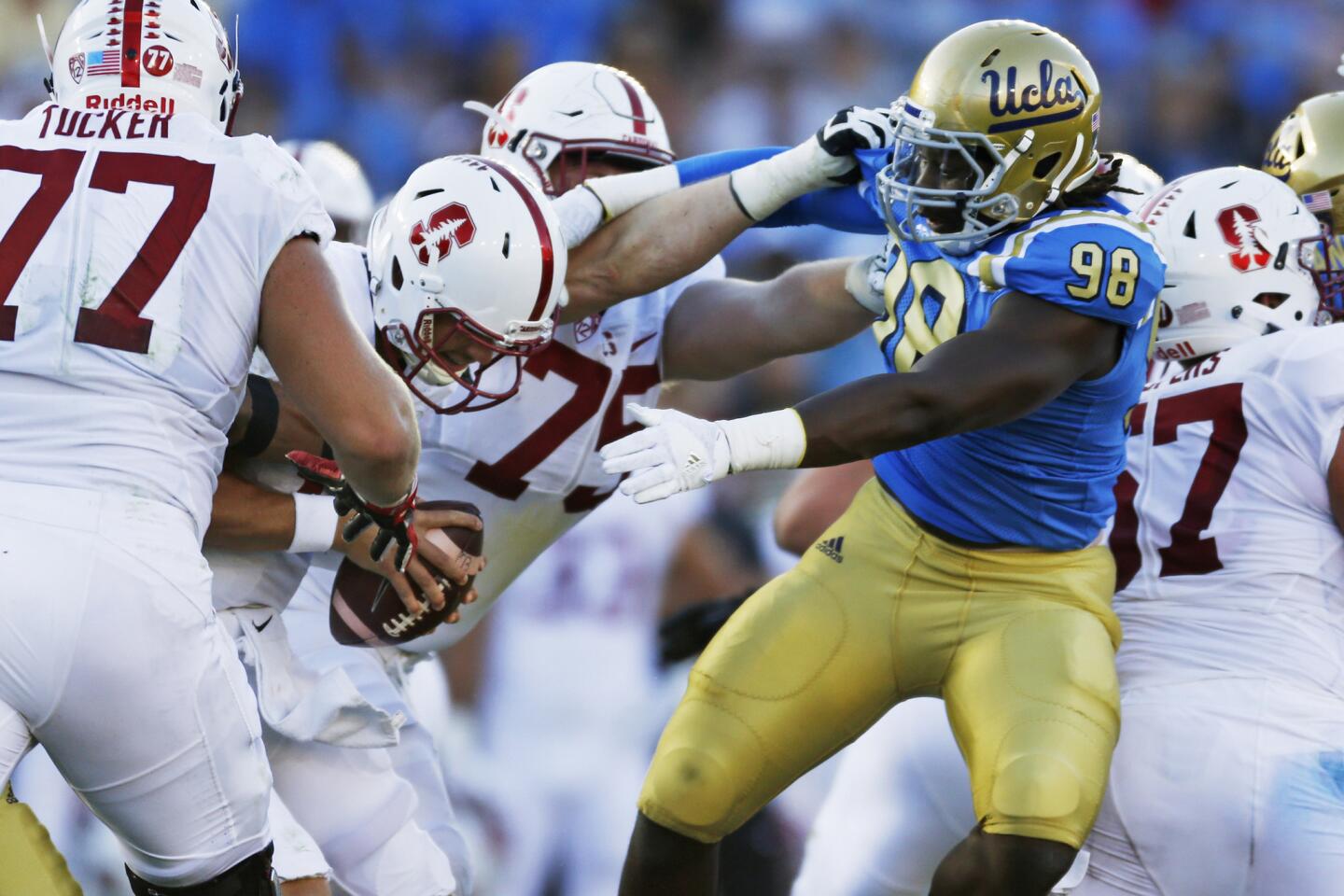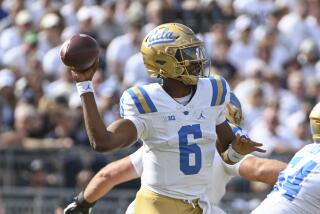UCLA defense seeks to continue its upward trajectory
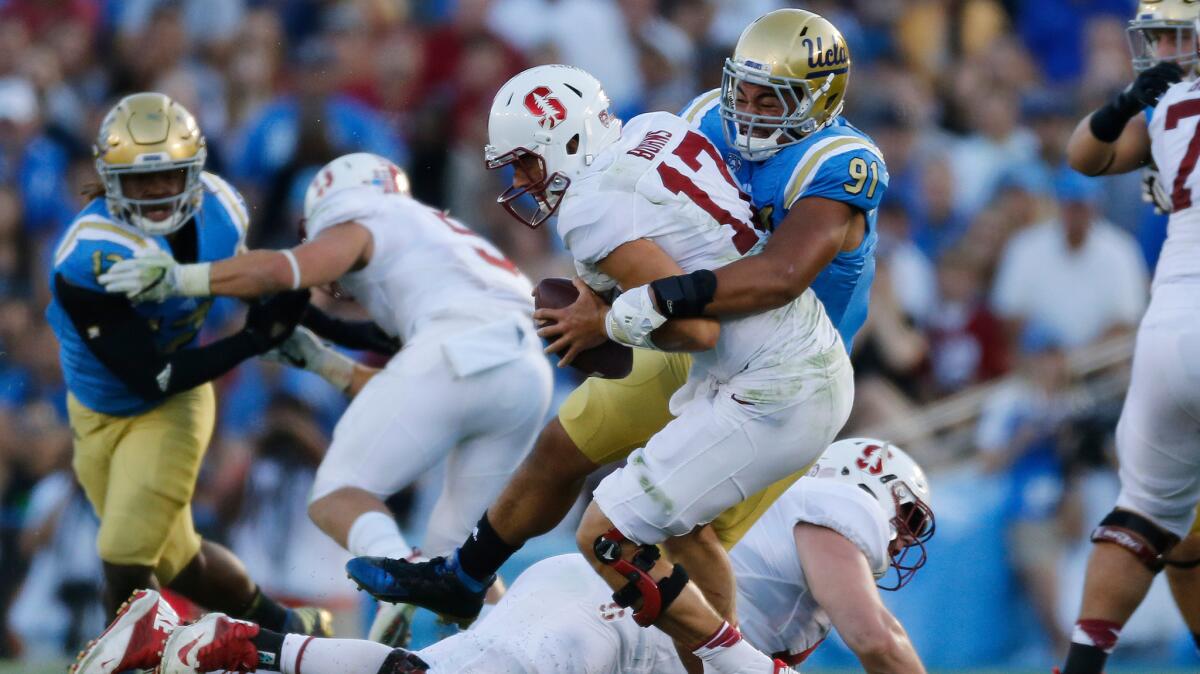
UCLA’s defense needs an updated resume. Move your cursor or pencil over to the start of the next paragraph and strike through the entire chunk of words.
Rarely blitzed. Couldn’t stop the run. Gave quarterbacks more time than Odysseus at sea.
After the last two games, those faults no longer apply. The Bruins’ more recent experience includes bringing the pressure and achieving more acceptable results.
Want references? Check with Stanford’s Christian McCaffrey and Brigham Young’s Taysom Hill.
The mobile Hill was mostly stuck in reverse, getting sacked four times and rushing for a minus-seven yards. McCaffrey was held below his season average in rushing and did not score for the first time this season.
“They kicked our backsides pretty well, early and often, both sides of the ball,” Stanford Coach David Shaw said last Saturday, sounding a defeatist tone even though his team prevailed after a late touchdown and a fluky score on the game’s final play.
UCLA’s defense getting mentioned in the same breath as its offense was a major development after what transpired over the season’s first two games, when opponents averaged 5.0 yards per carry and the Bruins recorded only one sack.
Team-wide enthusiasm about the defense was evident earlier this week when center Scott Quessenberry, standing in the back of an interview room on campus, mimicked defensive end Jacob Tuioti-Mariner’s unorthodox sack against Stanford as Tuioti-Mariner discussed it with reporters.
Tuioti-Mariner took a few steps and commenced a half-spin inside before whirling back the other way. The move faked out Cardinal offensive tackle A.T. Hall and allowed Tuioti-Mariner to crush quarterback Ryan Burns for an eight-yard loss, one of six sacks for the Bruins in the last two games.
UCLA defensive coordinator Tom Bradley said the improved pass rush was the result of selective pressure, not a relentless attack.
“You can’t give someone a dose of the same thing all day,” Bradley said. “You have to continue to mix it up.”
It’s helped that the defense has been at nearly full strength with the return of defensive tackle Eddie Vanderdoes and defensive ends Takkarist McKinley and Deon Hollins, who all missed parts of the first two games. Their presence has led to improved tackling and containment, advances reflected in Stanford and BYU each managing only two plays longer than 20 yards.
Equally important has been a greater emphasis on stopping the run and making opponents turn to secondary options.
“I think we’re learning how to, as a team, identify the guy who can hurt you most and try to take him away,” UCLA Coach Jim Mora said.
Bruins linebacker Jayon Brown shadowed BYU’s Hill, preventing him from finding escape lanes to break off lengthy runs. The Bruins stacked their defense against McCaffrey, leading to plenty of man-to-man coverage in the secondary.
The ploy worked … until Burns connected with receiver J.J. Arcega-Whiteside in the corner of the end zone for an eight-yard touchdown pass with 24 seconds left in the game.
“We thought they were going to run the ball,” Mora said. “They were in a run formation, we called a run defense. You’re asking your corners to go out there on an island and they’ve done it all day and held up really well and they got us there at the end.”
Stanford’s late touchdown was the overriding takeaway among the team, more so than the strides made by the defense that allowed UCLA to nearly pull off the upset. Perhaps that’s why the Bruins ended their final practice this week with a red-zone situation, simulating the pressure of a game’s final plays.
“If they don’t score, we don’t lose,” Brown said of the Cardinal. “So we’ve got to do a better job of keeping teams off the scoreboard. We could care less about, ‘Oh, we stopped McCaffrey.’ We want to win. We did good as a defense, but not good enough.”
UCLA’s defense will need to continue its upward trajectory Saturday at the Rose Bowl against Arizona quarterback Brandon Dawkins, whose legs appear more formidable than his arm. Dawkins has rushed for 391 yards and seven touchdowns in three starts, trailing only Louisville’s Lamar Jackson among Football Bowl Subdivision quarterbacks with an average of 130.3 yards rushing per game.
Mora described Dawkins as a faster, more explosive version of Hill. The Bruins hope another reminder surfaces in their ability to slow the quarterback, with Brown potentially back on shadow duty.
“Possibly,” Brown said with a smile when asked if he would reprise his role. “Depending on what [Bradley] calls.”
Those calls have gone right a lot more lately, putting a stop to letting everyone go where they wanted.
Twitter: @latbbolch
More to Read
Go beyond the scoreboard
Get the latest on L.A.'s teams in the daily Sports Report newsletter.
You may occasionally receive promotional content from the Los Angeles Times.
